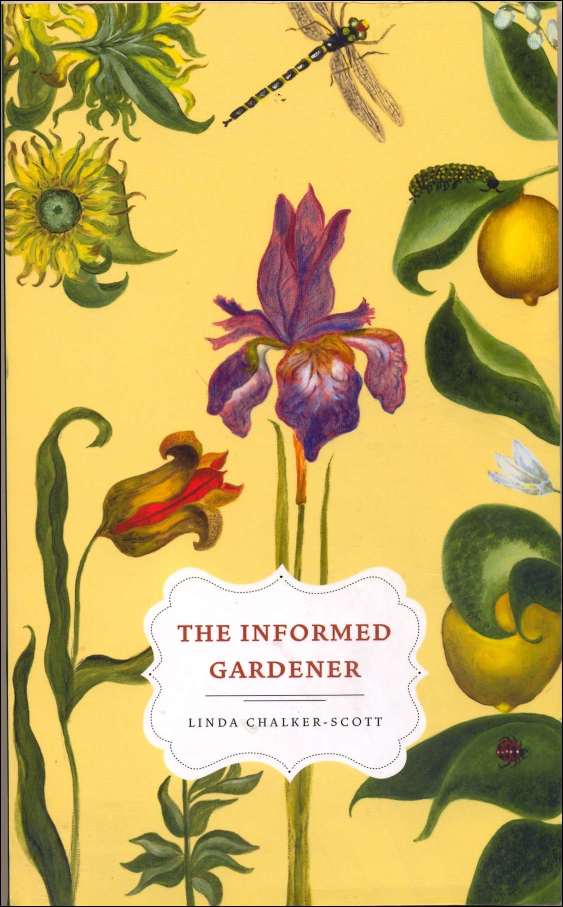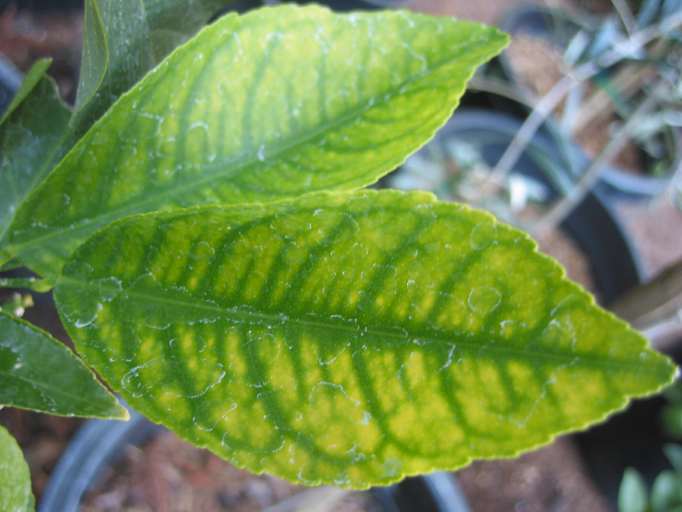Mythbusting in the garden
From the Davis Enterprise, September 25, 2008
The Informed Gardener
By Linda Chalker-Scott
University of Washington Press, $18.95
Linda Chalker-Scott is an extension urban horticulturist and professor at Washington State University (Puyallup). Her training in plant physiology prepares her for her job interacting with the public through the Washington master gardeners' program, Gardening is a mix of science and folklore, with many myths and practices that have no basis in science. After addressing these in her online columns, she finally compiled a few dozen of them into this readable and well-organized book.
 The Informed Gardener
The Informed Gardener
The popular media often presents scientific-sounding stuff without context or analysis.
When you hear something that sounds scientific, look closely: is it peer reviewed, from a reputable publisher? Have the studies and results been replicated? Is the evidence anecdotal, or based on actual studies? Finally, with some knowledge of plant physiology, soil science, climate, and other factors involved in plant growth, you can apply Judge Judy's famous dictum: "If something doesn't make sense, it's not true."
 Linda Chalker-Scott
Linda Chalker-Scott
Here are just a few of her busted myths.
Planting, management, and staking techniques.
Myth: handle with care, root systems are fragile!
Nope. Spreading out and pruning roots (as needed) at the time you transplant can eliminate root flaws and hasten new growth and establishment of the plant.
Should we prune the top to compensate for the root loss at transplanting?
No! Only remove dead or broken limbs. The more leaves you leave, the faster the roots will establish.
Should you turn in organic material at the time of planting? Does sand improve drainage?
No and no! Incorporating compost for most trees and shrubs was shown to be unnecessary, perhaps harmful, way back when I was a student. Perceived benefits from amending soil were from the fertilizer component. Compost breaks down and settles, so amended planting holes can end up as low spots.
Dig a proper planting hole (twice as wide, same depth as the pot), add a little fertilizer, adjust the pH if needed, and set the new tree a little above the grade.
Adding sand is even worse. Sand intermixed with clay creates a concrete-like soil with limited pore spaces. Unless you add enough sand to make 50% or more by volume, you do more harm than good. Contrary to popular belief, clay is a useful component in soil, as it retains water and nutrients.
Do new trees always need to be staked?
That depends on how they were grown. If a tree doesn't stand upright at planting, stake it carefully, tying it as low on the trunk as possible, for as short a period as possible, with enough freedom of movement that the trunk will thicken naturally. For more information, see our article Stop Tree Abuse!
Do pruning wounds need to be covered?
No! Extensive field work has thoroughly discredited the use of wound dressings and seals. Heavy tree paints seal in moisture and lead to decay. Black asphalt compounds absorb heat. The only time we paint a tree trunk is to prevent sunburn at the time of planting, using a water-base interior white latex.
Popular beliefs.
Water on the leaves will act as a lens, burning the leaf!
In her words, "this is one of those myths that refuses to die."
Scorched leaves result from root damage caused by too much or too little water. Salt in the water, wind stress, high temperatures, and cold also "burn" leaves. Drought is a major cause of scorched leaves, especially on broad-leaved evergreens. But water droplets sitting on foliage in direct sun do no harm whatsoever.
Add drainage material in the bottom of containers.
It has been commonly recommended for years to put a layer of gravel (or something) in the bottom of a pot before adding the potting soil and plant. It turns out this is counterproductive. Water does not move readily from layers of fine to coarse material. A saturated zone of water clings to the finer soil particles above.
Fertilizer practices.
Three of her articles address phosphate fertilizers such as "bloom food," starter fertilizers, superphosphate, and bone meal.
Background: every fertilizer has three macro-nutrients listed on the front in the order N-P-K (nitrogen, phosphorus, and potassium respectively). Nitrogen helps stimulate plant growth. Phosphorus and potassium are involved in many internal processes of the plant, particularly energy transfer (P) and water movement (K).
High-phosphorus fertilizers are sold as "high-bloom" plant foods (0-10-10 is a good example), or to promote root growth, winter hardiness, etc. What's the problem?
o There is little evidence for these claims. Phosphorus doesn't stimulate flower production or root growth, and has no apparent relation to winter hardiness. It is true that cold soil can cause plants to show phosphorus deficiency such as red or purplish discoloration. But this isn't because phosphorus isn't present; the roots simply can't absorb it when the soil is cold.
o Application is a challenge: phosphorus is quickly "grabbed" by soil particles, so it rarely moves much from where it is applied. Put it on the ground, it stays on the ground (or washes off into nearby waterways).
o Excess applications reduce the ability of roots to take up iron and manganese, causing deficiency symptoms. Plants already have difficulty taking these up here because of the pH of our water.
 Citrus leaves showing interveinal chlorosis due to iron deficiency.
Citrus leaves showing interveinal chlorosis due to iron deficiency.
o Finally, high P levels harm soil mycorrhizae! These beneficial fungi help roots extract nutrients from the soil, so over-applying high-bloom fertilizers may reduce plant vigor and health.
Read and follow label instructions! Apply these products sparingly and in the root zone. Large amounts may slow the growth of the plant and cause deficiency symptoms of other nutrients. If you have over-fertilized with phosphorus, applications of sulfur-based fertilizers can be helpful (Epsom salts, iron sulfate, etc.).
Note: some plants from Australia are particularly sensitive to phosphorus, notably members of the family Proteaceae such as Grevillea. Never apply high-bloom or "starter" fertilizers with these.
More fertilizer myths.
Potassium (K, the third number) and magnesium are often touted to increase cold hardiness of plants. Common sources of these are fireplace ashes and Epsom salts. It's hard to say where this notion comes from, but studies show that neither mineral affects cold hardiness of plants. Wood ashes are not beneficial here. Epsom salts do make leaves greener and reduce the soil pH briefly, so they can be helpful here. Rose growers like to apply Epsom salts in winter, just after pruning.
In one article, Linda asks a simple question which gardeners can ask as they consider the use of any chemical in the garden - natural or synthetic, commercial or household:
o Is it necessary?
o Can it be harmful?
When assessing home remedies, old wives' tales, and manufacturers' claims, those two simple questions, combined with "read and follow label instructions," could prevent a lot of damage.
Organic, natural, native?
Myth: when it comes to pest management, "organic products are safer!"
Not necessarily. The question you should ask about any pesticide, organic or natural, is how toxic and persistent it is. Most organic pesticides are less persistent in the environment than synthetic ones. Some are toxic: nicotine sulfate is an organic pesticide that is very toxic. Ryania, sabadilla, and pyrethrins are organic pesticides that are very toxic to insects, but have low toxicity to mammals. Ask before you spray.
Are native plants more suitable ("environmentally sustainable") for landscaping?
Not necessarily. "Native" includes plants from a wide range of soil types and rainfall patterns. Some are very fussy, others are great. She notes, "site considerations should always dictate plant selection." Drainage, irrigation, and the site uses are the most important considerations.
Compost tea?
What is compost tea, you may ask? Well, as it sounds, it is where you mix compost and water, then allow it to sit and infuse. Devotees then strain off the fluid and spray it on their plants. Recipes seem rather complex, involving molasses, bubblers, kelp, rock dust, and more. Careful instructions are given to prevent anaerobic conditions (readily recognized by the stench).
Claims about the benefits of compost tea abound on the internet. A Fine Gardening article enthuses that "when sprayed on the leaves, compost tea helps suppress foliar diseases, increases the amount of nutrients available to the plant, and speeds the breakdown of toxins."
Huh? The last two claims don't pass the logic test (what toxins? how?). But the claims about suppressing diseases have been researched.
Chalker-Scott looked at numerous studies. Interestingly, despite dire warnings about the presence of "plant-disease-causing bacteria and plant-toxic products" in anaerobic compost tea, the studies showed that non-aerated (i.e., anaerobic) compost tea actually may help suppress plant diseases! But results with aerated compost tea were either inconclusive or showed it to be ineffective. She did find evidence that compost itself, simply applied as a soil mulch, suppressed a dozen soil diseases. No stinky trash can full of compost glop needed. Just sprinkle your compost on the ground, as nature intended.
Finally, the infamous Vitamin B1 to "prevent transplant shock."
Vitamin B1 is thiamine. Plants manufacture their own thiamine. Thiamine does not stimulate root growth.
Faced with this evidence, savvy manufacturers added other things. Certain plant hormones increase the number of roots or enhance lateral root growth. These may also suppress the growing top of the plant, allowing the plant to use internal resources for root production but slowing leafy growth. Nitrogen can improve growth of both tops and roots. A small amount of plant food in the planting hole will make more difference than anything else.
Eight years of Linda's columns are available as pdf files at www.puyallup.wsu.edu/. The Informed Gardener can be ordered from local bookstores, or purchased from the publisher at University of Washington Press
© 2008 Don Shor, Redwood Barn Nursery, Inc., 1607 Fifth Street, Davis, Ca 95616
www.redwoodbarn.com
Feel free to copy and distribute this article with attribution to this author.
Click here for Don's other Davis Enterprise articles
